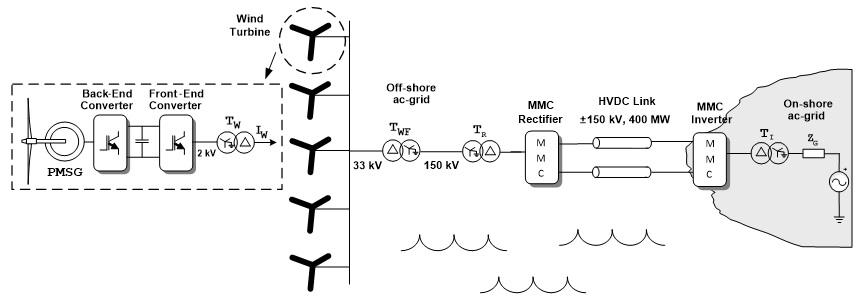INTERWIND-HVDC

SUMMARY
Power electronic converters have contributed to the connection of larger amounts of renewable power with decreasing connection costs and addition of new features that might increase the reliability, robustness and hence delay investment in new transmission infrastructure.
An electrical system dominated by power electronic converters has important technical and operational challenges, amongst those:
- Low or reduced inertia.
- Protection coordination with existing relays, as power converters will limit short circuit currents and existing protection systems might not be able to accurately detect and isolate the faults.
- Coordination of the recovery of a large converter based system after a fault.
- Subsynchronous and harmonic instability caused by interaction between converters of probably different manufacturers and with a grid with changing topology, because of faults or reconfiguration of more actively managed grids.
The main objective of this project is the development and validation of robust control strategies for grid forming converters connecting to HVDC and HVAC grids with high penetration of renewable generation, taking into account changing grid conditions and limited technical and operational information about existing converters.
Specific objectives:
- Develop robust control strategies for large grid forming converters for use in low or no-inertia grids with partial information about existing converters.
- Control of HVAC connected grid-forming off-shore wind farms, including energy storage and STATCOM compensation.
- Control of HVDC connected heterogeneous type-3 and type-4 grid forming off-shore wind farms using MML power converters.
- Control of HVDC connected heterogeneous type-3 and type-4 grid forming off-shore wind farms using Diode Rectifiers.
- Validate the developed control strategies in realistic condition
 .
.
